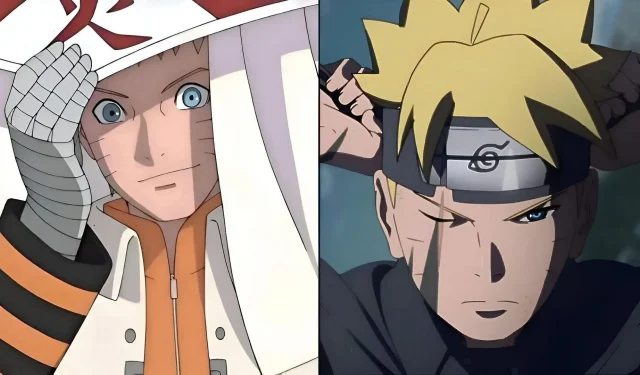Fans of Naruto are currently engaged in a fervent debate regarding its sequel, Boruto, which explores the adventures of the next generation of ninjas. Many dedicated followers argue that Boruto strays too far from the traditional themes that characterized Naruto, believing that the original series was more faithful to the core tenets of shinobi culture.
Recently, a viral social media post featuring iconic scenes from Naruto has ignited heated discussions on platforms like Twitter. This post reveals an intriguing reality: the original series deviated from conventional ninja archetypes much earlier than fans might want to admit.
Naruto vs. Boruto: The Clash Over Ninja Legacy
The crux of the controversy involves an image depicting the Asura Path of Pain from Naruto Shippuden, showcasing a character with multiple robotic arms and advanced weaponry, details that seemingly contradict the essence of traditional ninjutsu.
This revelation challenges the long-standing critique of Boruto, as it emphasizes that the beloved arcs from the original also featured fantastical elements. For example, during the Chunin Exams, we witnessed Hidden Sound ninjas utilizing advanced “scientific ninja tools,”Gaara’s transformation into a colossal sand beast, and the Third Hokage’s summoning of the god of death—a significant deviation from realism.
The initial episodes of Naruto launched viewers into a world with supernatural elements, starting with the introduction of a giant nine-tailed fox. This post serves as a critique of the double standards seen within the fan community, who embraced these fantastical components in Naruto yet criticize their presence in Boruto.
Fan Reactions: Divided Opinions
The reactions on Twitter have been polarized, dividing anime enthusiasts into two distinct factions. Many longtime fans have begun to reconsider their previously held beliefs, reassessing the original series through a more critical lens.
“Yk what they mean when they say that tho This is tame compared to lazer battles in space,”commented one fan.
“Poll it, Chunin exams is all really Naruto fans favorite arc,”added another.
“I think what they mean is that they miss fights like the one with Zabuza. There, Naruto and Sasuke actually combined teamwork, various jutsus, and shuriken to win. Having characters rely on one jutsu made the story less satisfying for me,”remarked another fan.
Conversely, Boruto critics remain staunch in their views. Some argue that while both series exhibit fantastical elements, those in the first series seemed to integrate more seamlessly into its universe compared to Boruto’s approach.
“Wow. One guy that doesn’t fit the stereotypical mold. I guess that this makes the Boruto good in your eyes somehow,”criticized one user.
“I think when ppl say ts they mean this they meant to say ‘I miss when Naruto was more grounded and there weren’t gods throwing nukes at each other’,”responded another user.
“still is, Naruto fights are choreographed much better than Boruto,”stated one fan.
Conclusion: The Role of Nostalgia in Fan Perception
This ongoing discussion highlights the profound impact nostalgia has on fan perceptions of different series. The fond memories and personal growth experiences associated with the original Naruto allow it more leeway regarding narrative inconsistencies, something that Boruto struggles to achieve.
Fans who once accepted the exaggerated power dynamics and lengthy plots of Naruto now scrutinize Boruto for similar storytelling techniques. This social media discourse underscores that even iconic series have flaws that nostalgia can often obscure.


